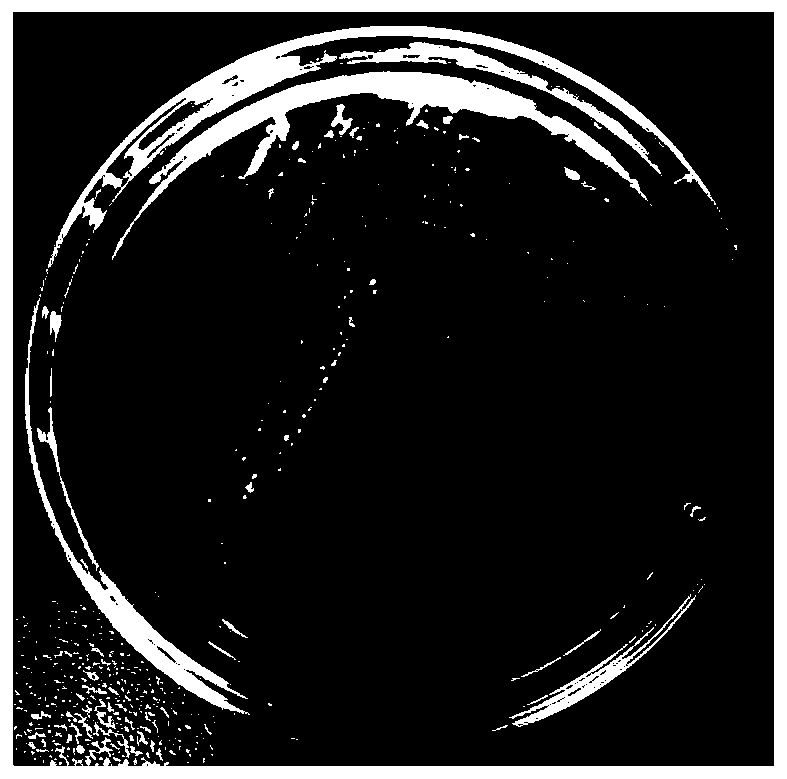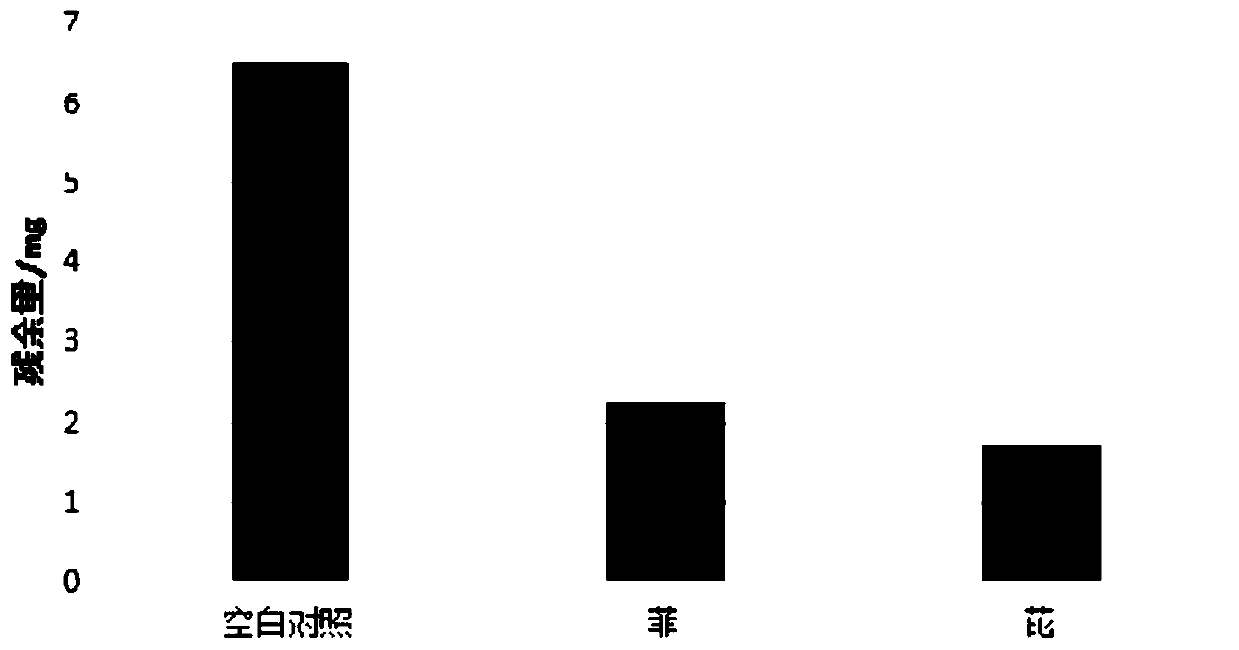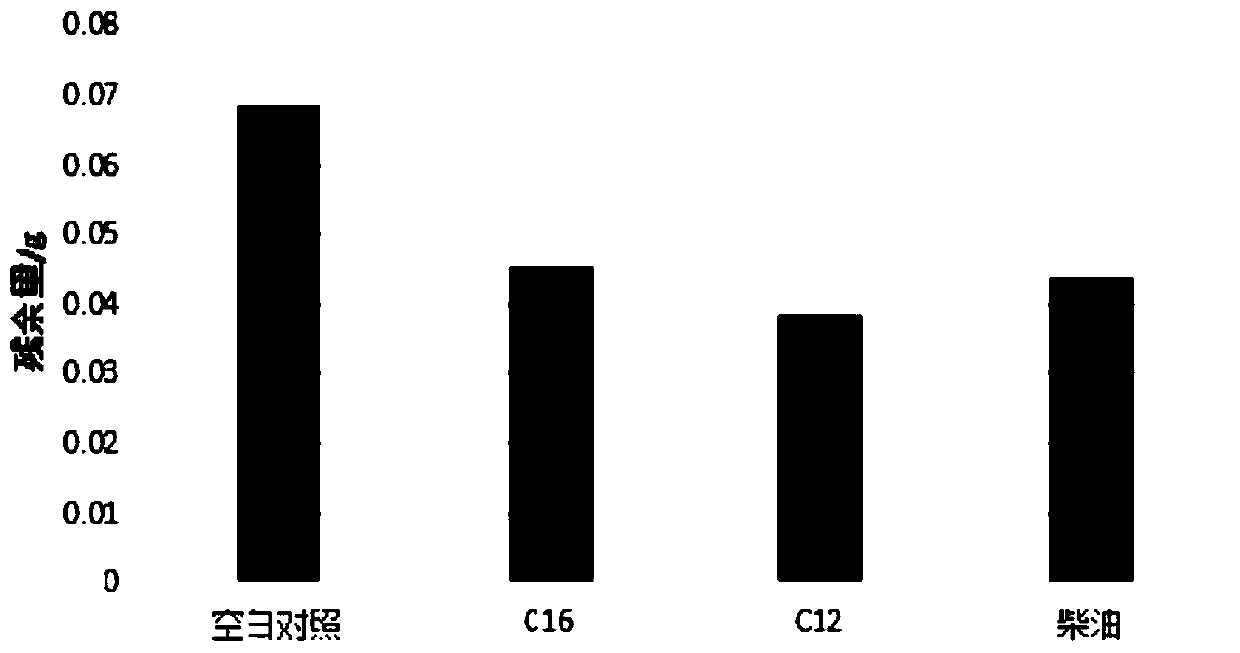Petroleum hydrocarbon degradation bacterium and culturing, screening and applying method thereof
A technology of petroleum hydrocarbon degrading bacteria and screening method, which is applied in the fields of petroleum hydrocarbon degrading bacteria and its culture, screening and application, and can solve the problems of destroying mariculture and salt field production, pollution, and sticky beaches.
- Summary
- Abstract
- Description
- Claims
- Application Information
AI Technical Summary
Problems solved by technology
Method used
Image
Examples
Embodiment 1
[0028] Embodiment 1: strain morphological characteristics
[0029] Streak inoculate a single colony into HLB solid medium, place the plate upside down in a constant temperature incubator, and incubate at 28°C for 48 hours. The colony is round, yellow and opaque, with smooth and moist surface, regular edges, no halo, and a raised center. 2~3mm in diameter, see figure 1 .
Embodiment 2
[0030] Embodiment 2: Screening and identification of bacterial strains
[0031] (1) Pacific deep-sea sediments (sample number 45II-CC-S06-MC01, 4-6cm away from the surface layer of sediments, CC sea area of the second voyage of Oceania 45 voyage, 153°23.1205′W, 12°58.1135′N), The sediment is yellow-brown, odorless, weakly viscous, and the surface layer is semi-fluid, with a slightly silty feeling when rubbed by hand. After the sediment samples were aseptically collected, they were cryopreserved and then transported to the laboratory for the next stage of research.
[0032] Take the ocean surface seawater and sterilize it with high-pressure steam at 121°C for 20 minutes, then add 1% volume of sterile NH 4 NO 3 solution (100g / L) and KH 2 PO 4 solution (10g / L, pH6.7) and 0.1% volume of FeSO sterilized by a 0.22μm filter 4 (0.4g / L), the pH value of the medium obtained at last is about 7.5. Before inoculation, 1% (V / V) polycyclic aromatic hydrocarbons (carbon source concent...
Embodiment 3
[0034] Example 3: Determination of bacterial strain polycyclic aromatic hydrocarbons and alkane degradation ability
[0035] Take the ocean surface seawater and sterilize it with high-pressure steam at 121°C for 20 minutes, then add 1% volume of sterile NH 4 NO 3 solution (100g / L) and KH 2 PO 4 solution (10g / L, pH6.7) and 0.1% volume of FeSO sterilized by a 0.22μm filter 4 (0.4g / L), the pH value of the medium obtained at last is about 7.5. Add 1% (V / V) alkanes and polycyclic aromatic hydrocarbons (carbon source concentration is 50mg / L) before inoculation
[0036] After cultivating for five days, open the bottle mouth, obtain the mass spectrogram of the sample by GC-MS (gas chromatography-mass spectrometry), measure the residual amount of phenanthrene, and obtain a degradation rate of 50% to 60%. The residual amount of pyrene was measured, and the degradation rate was 60%-70%. The degradation rate of 16-alkane is 10%-20%, the degradation rate of 12-alkane is 15%-25%, and ...
PUM
 Login to View More
Login to View More Abstract
Description
Claims
Application Information
 Login to View More
Login to View More - R&D
- Intellectual Property
- Life Sciences
- Materials
- Tech Scout
- Unparalleled Data Quality
- Higher Quality Content
- 60% Fewer Hallucinations
Browse by: Latest US Patents, China's latest patents, Technical Efficacy Thesaurus, Application Domain, Technology Topic, Popular Technical Reports.
© 2025 PatSnap. All rights reserved.Legal|Privacy policy|Modern Slavery Act Transparency Statement|Sitemap|About US| Contact US: help@patsnap.com



